My role as a TAP teacher in East Ayrshire enables me to support establishments to embed a child centred pedagogy. ‘Realising the Ambition: Being Me’ creatively captures the cycle of a child’s learning through observation, interpretation and documentation of learning, responsive and intentional planning and facilitation.
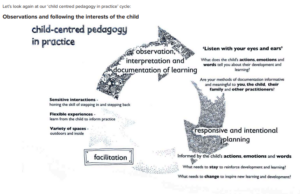
(Realising the Ambition, 2020, p.64)
Today, I want to focus on the ‘enabling environment’, and how facilitating an effective learning space can support your observation, planning and teaching and learning cycle.
So, what is an enabling environment?
An enabling environment is often referred to as the emotional environment, indoor environment and outdoor environment.
Realising the Ambition supports this understanding further in Section 6.3 Facilitating playful learning environments. It even explains what children need from their learning spaces as they grow and develop within their early years.
Regardless of what my focus is within an establishment I always spend time evaluating the learning environment (emotional and physical) as it truly is the third teacher. Biermeier (2015) stresses the importance of the environment within the Reggio Emilia philosophy and describes the environment as;
‘a setting designed to be not only functional but also beautiful and reflective of the child’s learning. It is the child’s relationship with parent, teacher, and environment that ignites learning.’
I have often experienced that creating a continuous provision that is flexible with open-ended resources allows for endless learning possibilities that ignites collaboration between children, fosters creativity and imagination, provokes investigation and enables children to make connections within their learning. If we can achieve this then children will have high levels of engagement and learning and teaching will naturally follow.
Throughout my career as an Early Years teacher, I have implemented a range of strategies to establish enabling environments within my settings, and I want to share some of approaches that I have used with you to support you on your learning journey.
Learning Zones
Deirdre Grogan advocates that the learning environment should provide opportunities for exploration of children’s thinking across the 4 zones;-
- The Creative Zone
- The Social Zone
- The Discovery Zone
- The Outdoor Zone
The learning environment is carefully designed, starting with observations of children to capture their voice through their actions, emotions and words. The design of the zones covers the curriculum, but remains flexible and responsive to children’s needs. Children develop skills, make connections within their learning through the interaction of real resources. The Outdoor zone allows children’s imagination to grow and develop their relationship with nature.
Planning for Continuous Provision: Alistair Bryce-Clegg
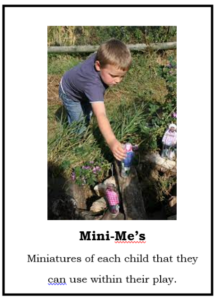
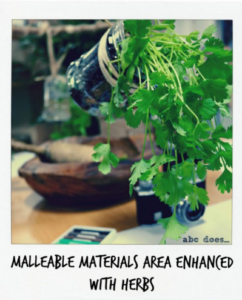
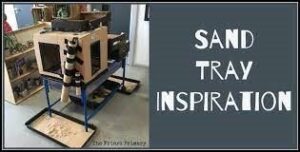
Alistair Bryce-Clegg’s approach support’s practitioner knowledge of the continuous provision. His website abcdoes.com is full of helpful resources, blog posts and articles that help you grasp a good understanding of his pedagogical approach. He dives into the explanation of ‘continuous provision’ and explains it as far much more than just the resources we put out. Bryce-Clegg’s approach nurtures the development of key skills through the continuous provision. Bryce-Clegg (2020) states;
‘If we constantly provide the same (often basic/emergent) resources in these areas, then we encourage children to revisit basic/emergent skills. Using a system of Common Play Behaviour identification can support us in providing challenging resources to complement our open ended play spaces.’
There is so much more to his pedagogical approach, and I have often used elements of his work to help me offer a challenging learning environment for children, which focused on the development of skills across the curriculum. His resources available on his website have also supported me to document how the environment changes throughout the year and why.
Anna Ephgrave
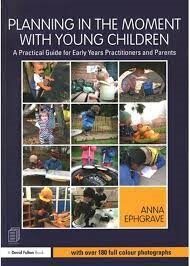
Anna Ephgrave’s (2018) approach focuses on providing genuine choice for children through a workshop set-up. Resources are available to children for the full session, and cleverly organised and stored to allow optimum access. All areas are well stocked, tidy and clearly labelled or shadowed. Resources are carefully selected to encourage high levels of engagement and the workshop set up provides many opportunities for the hidden curriculum, for example, providing one or two spoons at the water tray to encourage children to communicate and negotiate with each other. I have often used shadowing of resources to aid tidying up and provide opportunities for matching shape.

The Curiosity Approach
The Curiosity Approach has become very popular amongst Early Year’s Practitioners and the environment is a key ingredient to their pedagogical approach, using authentic open-ended resources. The curiosity Approach uses recycled materials that provide an inviting learning space. Not only do they consider the resources available, but lighting and soft furnishings are just as important to create a calm atmosphere within their play spaces. I have found myself using some of their quick guides to support my ideas for inspiring learning spaces, and I often enjoy looking at pictures of settings who have embarked on their accreditation journey for ideas and inspiration.
Useful tools
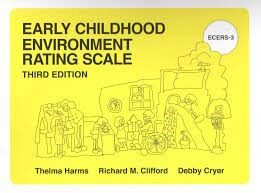
I have previously evaluated learning environments by just observing how children use the space and how adults respond to children’s interests and fascinations, but there are a few tools that you may find useful to evaluate your environment. The Early Childhood Environment Rating Scale (ECER’s) is an observation tool that assesses the quality of the overall learning environment and is available for different age groups. The ‘Leuven Scale’ can also be used to support your evaluation of learning spaces by observing children’s level of engagement and wellbeing across your setting. Children’s level of involvement can really help measure the success of your environment. It can also help you identify areas or resources that children do not access as much, providing you with a starting point to make improvements to your learning environment.
Final thoughts….
Considering your indoor and outdoor play spaces is an important part of child centred pedagogy. If you are reviewing your learning environment, I hope this blog gives you some insight into a range of different approaches that can support you to facilitate engaging play spaces. The TAP team is always happy to help you along your journey and we would love for you to share your journey with us!
By Mandi Hayes
References
Crichton, V, Carwood-Edwards, J, Ryan, J, McTaggart, J, Collins, J, MacConnell, MP, Wallace, L, Diamond, C, Grogan, D, Carey, J, MacAulay, L, Shaw, N, Gill, C & Johnston, K 2020, Realising the Ambition – Being Me: National Practice Guidance for Early Years in Scotland. Livingston.
Ephgrave, A. (2018) Planning in the moment with young children – a practical guide for early years practitioners and parents. Oxon: Routledge.
Biermeier, MA (2015) Inspired by reggio emilia: emergent curriculum in relationship-driven learning environments. Available at: https://www.naeyc.org/resources/pubs/yc/nov2015/emergent-curriculum#:~:text=The%20third%20teacher%20is%20the,and%20environment%20that%20ignites%20learning (Accessed 5th November 2023).
Bryce-Clegg, A (2020) Planning for continuous provision. Available at: https://abcdoes.com/abc-does-a-blog/2020/09/11/planning-for-continuous-provision/ (Accessed 5th November 2023).
Useful Websites:- The Curiosity approach. Available at: https://www.thecuriosityapproach.com/ (Accessed 5th November 2023).

